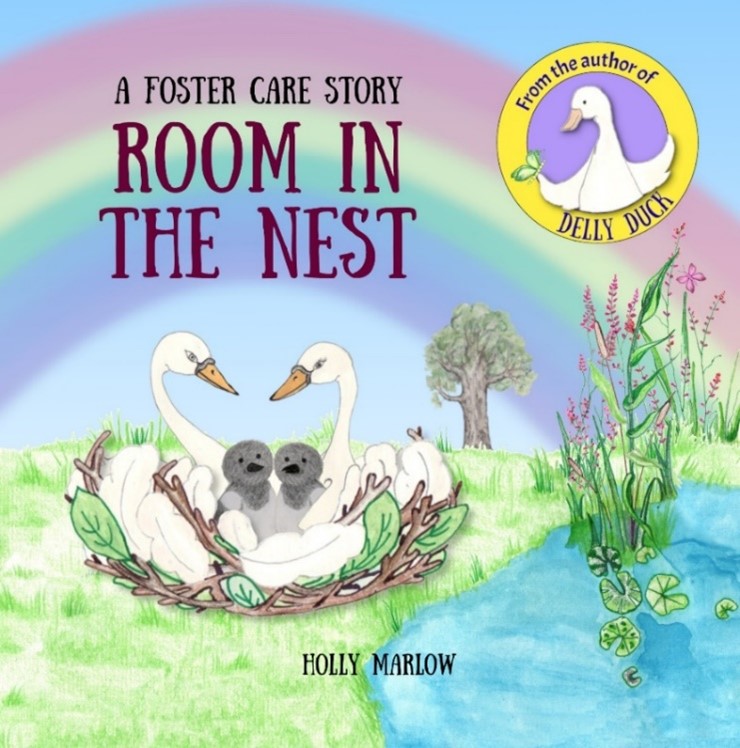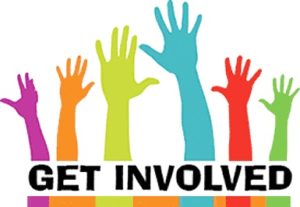In this guest blog, adoptive parent Holly tells us about what inspired her to write books about adoption and foster care. Her latest release 'Room in the Nest' is an inclusive story to help children to understand fostering, reunification, kinship care, adoption and the family court system. A huge thank you from all at PAC-UK to Holly for writing this piece and for sending us two free copies of 'Room in the Nest' for our service users.

Hello! I’m Holly Marlow. I have a 6 year old biological daughter, Zoe, and a 3 year old adopted son, “J,” who joined our family when he was 13 months old. My children ask a lot of questions, which have inspired me to write books about adoption and foster care.
I usually use stories to help my children to understand and process emotive topics, but while we were going through the adoption process, I couldn’t find any stories that explained why some children can’t stay with their birth families, so I decided to write my own!
When I wrote my first book, ‘Delly Duck: Why a Little Chick Couldn’t Stay with his Birth Mother,’ we hadn’t yet been matched, so I didn’t know the specific story of my son. I didn’t want to make it specifically about him anyway, as the details of his story are private, and his to share if he so wishes, so I included metaphors that can be interpreted in a few different ways, depending on the child’s life story.
Delly Duck frequently gets distracted chasing butterflies, forgetting to look after her egg, then her duckling when the egg hatches. This can be interpreted as a metaphor for an addiction that existed pre-birth and that Delly sadly does not overcome, or it might more simply represent memory and concentration problems due to the birth parent’s own traumatic experiences, health issues or a learning disability.
The story includes a social worker who tries many times to help the birth parent to learn how to parent. Delly does try, but even with the social worker’s help, it becomes clear that she isn’t able to keep her child consistently safe. I hope that parents can use this aspect the story to relate to the help and advice that social services provide to birth parents, so that they can explain that the decision to remove a child is not taken lightly and that birth parents do receive support.
My second story, ‘Adopting a Little Brother or Sister,’ is written it in the voice of a young child sharing their experiences, and when Zoe saw my initial illustrations, she insisted on illustrating it and did a much better job than I would have! The story is designed to help prepare a child for becoming a big brother or sister through adoption, and touches upon social worker visits and the introductions process with the foster family, as well as empathising with the frustration a child may feel with how long the process takes!
Next, I created ‘So You’ve Adopted a Sibling,’ which also features Zoe’s drawings and helps children to process some of the emotions and changes to routine they may experience in the early months as a big brother or sister.
I was then asked by a few adoptive families to create a cousin version of ‘Adopting a Little Brother or Sister,’ which is titled ‘Cousins by Adoption,’ and I have had some of the stories translated into other languages, when people have requested French, Spanish, and German versions.
I am most proud of my latest release, ‘Room in the Nest.’ It is an inclusive story to help children to understand fostering, reunification, kinship care, adoption and the family court system. It shows how social workers explore the different options for a child, and the involvement of the judge.
The story represents lots of different families, including a single-parent family, and a stork-flamingo family, which has same-sex parents and a child who doesn’t physically resemble her parents.
The swans start off as foster carers and the Wise Owl decides that they should look after some of the chicks until they are fully grown and able to look after themselves and build their own nests. This can be interpreted in a few ways to reflect a child’s story, or that of foster/biological siblings who they no longer live with. It could represent a foster-to-adopt placement, long term foster care, or a foster family who decided that they wanted to adopt the child in their care.
I hope my books will help you to discuss different types of families with your children!
Holly Marlow | November 2022
All of Holly’s books are available on Amazon. For more information about published and upcoming books, or to get in touch with Holly, visit www.hollymarlow.com or click on the below links:
Amazon | Instagram | Facebook | Twitter

Become a PAC-UK 'guest blogger'
Please note, all content published on this page is provided by our guest blogger/s, based on their real-life experiences. We invite you to discuss this blog via PAC-UK's Twitter profile and ask you to tag @PACUKadoption in to your posts and use the hashtag #PacukBlog
This blog is the twenty-fourth of our regular 'guest blogger' platform which we started in 2019. We would love to hear from adoptees, birth parents (and relatives), adoptive parents/carers, special guardians and professionals who are interested in taking part in future blogs. If this interests you please email leon@pac-uk.org.



